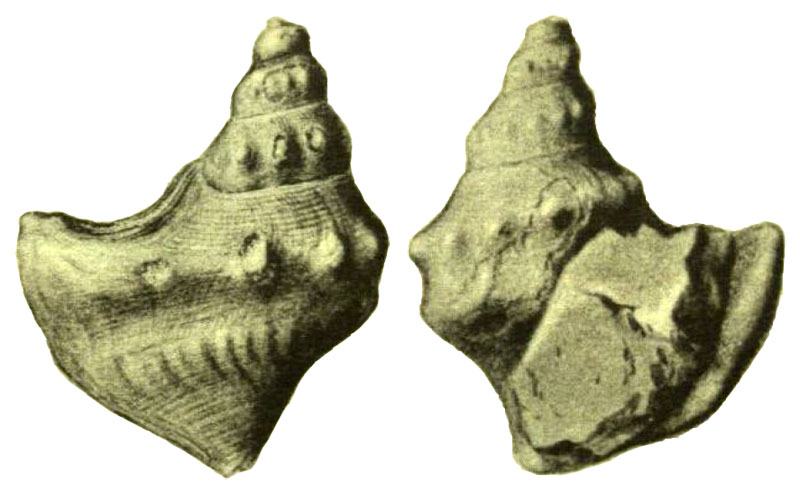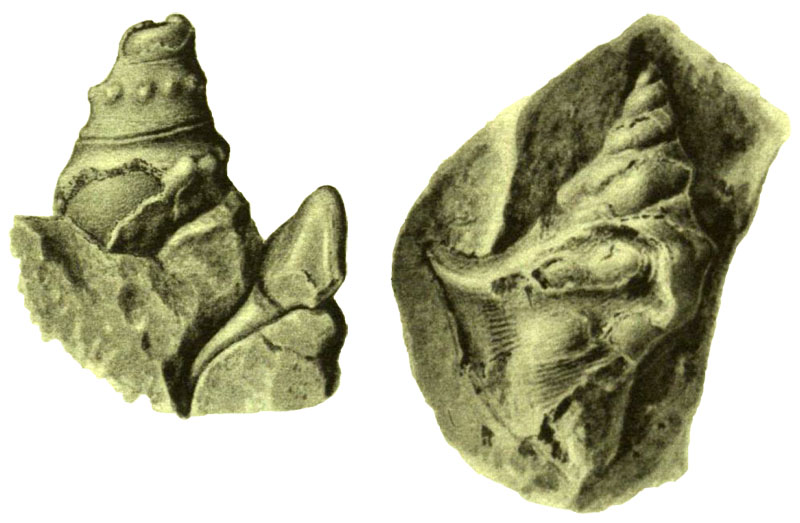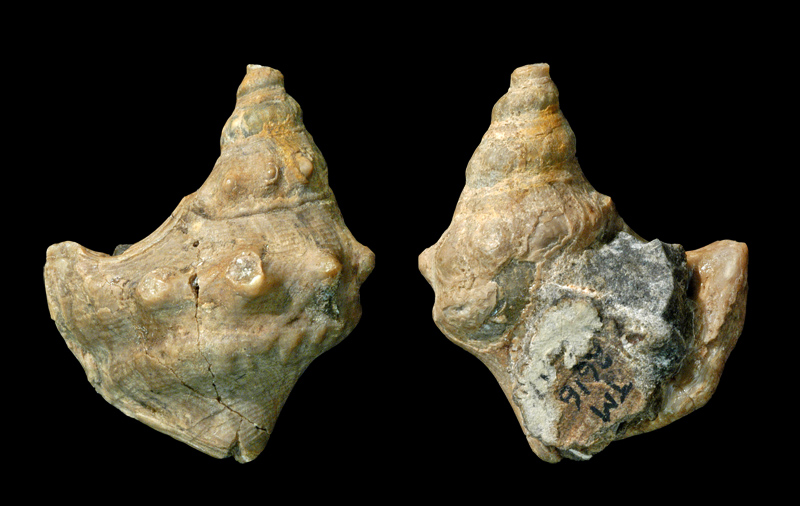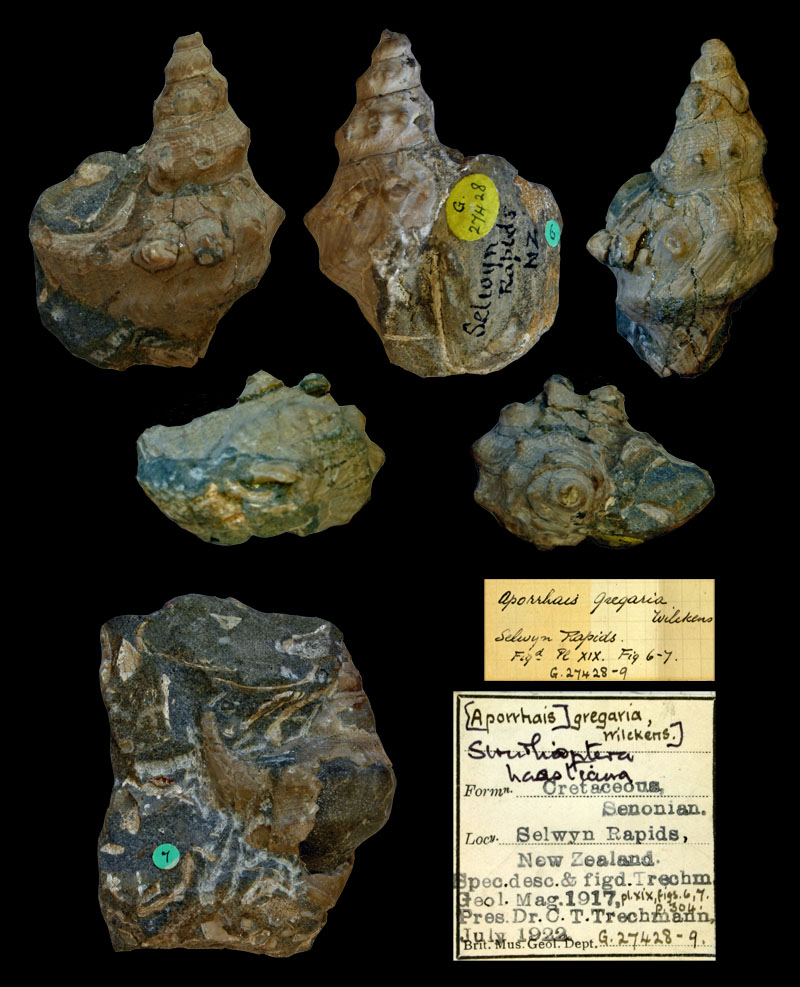Species / Struthioptera Haastiana
Stromboidea
Original description of Arrhoges haastianus by Wilckens, 1922:
- ”The number of whorls of this shell cannot be determined, as the protoconch is not preserved in any specimen. The height of the spire seems to be three-fifths of that of the body-whorl, but possibly it is equal to half of the shell. The spire is cone-shaped; a little below its middle the whorls bear strong nodes, which are lengthened somewhat obliquely forward and below. On the penultimate whorl there are 10 such nodes. The large body-whorl is likewise sculptured by this line of nodes. The last 4 nodes swell to a considerable size, the penultimate becoming the strongest. The aperture stands obliquely to the axis of the shell, and has a rectangular outline. The inner lip spreads over the body and forms a strong callus; it reaches upward to the penultimate whorl, encrusting its nodes. The outer lip is aliform; it is sinuous above, and has a callous margin; at its extremity it forms a short sharp projection, which turns a little backward. The external margin of the wing is nearly rectilinear, thick and callous. The lower margin forms an obtuse angle with the outer margin, and is likewise callous, but less thick than the outer one; it is slightly sinuate, and passes into the quite short canal. The chief node-ridge of the body-whorl becomes extinct towards the wing. The whorls and the wing are decorated with fine spiral striae. The number of these is about 13 on the part above the strong node-ridge and about 30 below. On the last whorl there is a second and a third keel beneath the chief node-ridge, both of which are rounded and much less distant from each other than the upper one from the chief ridge. The upper of, these two lower ridges bears nodes. In some specimens both ridges melt into each other, forming a broad elevation. The growth-lines are well developed on the last whorl; they bend forward in the upper node-ridge and recurve in the lower ones; they are also strong on the whorls of the spire, and form partly fine sharp ridges, partly furrows.”
Locus typicus: Selwyn River, Malvern Hills, South Island, New Zealand
Stratum typicum: Selwyn Rapids Beds, Maastrichtian, Cretaceous
Lectotype: O. Wilckens, 1922 pl. 2 fig. 5, designated by Finlay & Marwick, 1937, p. 62, no. TM 2616 (Institute of Geological and Nuclear Sciences, Lower Hutt, New Zealand)
Arrhoges haastianus Wilckens, 1922, pl. II, fig. 5a, b
Arrhoges haastianus Wilckens, 1922, pl. II, fig. 6, 7
Struthioptera haastiana (Wilckens, 1922); Selwyn Rapids Beds, Maastrichtian, Cretaceous; Selwyn River, Malvern Hills, South Island, New Zealand; Lectotype; Coll. GNS Science National Paleontological Collection, New Zealand TM 2616
Struthioptera haastiana (Wilckens, 1922); Senonian, upper Cretaceous; Selwyn Rapids, Malvern Hills, South Island, New Zealand; Coll. BM(NH) no. G 27428 & G 27429 (b); Copyright BM(NH)
References
- Crampton, J.S.; Moore, P.R. 1990 Environment of deposition of the Maungataniwha Sandstone (Late Cretaceous), Te Hoe River area, western Hawke's Bay, New Zealand. New Zealand Journal of Geology and Geophysics, 33(2): 333-348
- Finlay & Marwick, 1937
- Stilwell, 2002
- Stilwell, 2003
- Wilckens, 1922
- Wilckens, O. 1924 Lahillia and some other fossils from the Upper Senonian of New Zealand. Transactions and proceedings of the New Zealand Institute, 55: 539-544
- Zinsmeister & Griffin, 1995




